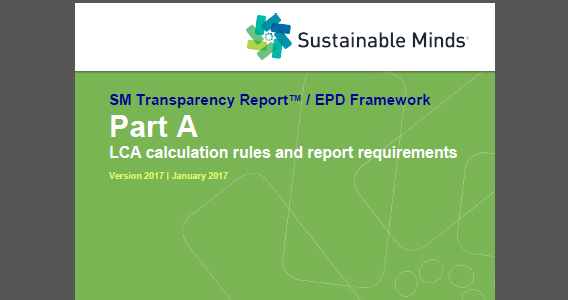Part A 2017 – What’s new
Part A 2017 provides a number of significant advances in response to ongoing developments in the PCR/EPD requirements landscape and in support of the POC’s goal to standardize and simplify the PCR/LCA/EPD creation and delivery process.
- Streamlined, standardized, and consistent methods for creating new and updating expiring PCRs
- More cost- and time-efficient verification processes
- Manufacturers have a choice of report format and delivery method – EPDs in PDF, or SM Transparency Reports in the cloud
Now in its third release, Part A is updated annually. This year, the Technical Advisory Board (TAB) reviewed more than one hundred comments. Our comment period coincided with the 2016 USGBC EPD guidance comment period. The TAB and POC members submitted comments, which you can read about here.
Our feedback to the USGBC was summarized in two key messages:
- Our objectives and intent are aligned. USGBC and the POC are working to provide more guidance, increase the number of EPDs, improve quality, and develop tools; the thing we’re most impressed with is the benchmarking guidance, which is being considered for adoption into Part A 2017.
- Don’t stipulate the use of one program operator’s program or require additional content that doesn’t support users’ needs. Let’s work together to write guidance applicable to all program operators and their programs.
As a result of this evaluation, some components have been included in Part A 2017.
What’s new based on TAB feedback:
- The reporting of fossil fuel depletion was changed to only be optionally reportable in the additional environmental information section. There is known uncertainty associated with this impact category.
- General overall review: minor editorial changes, readability, clarification, and updated references.
- Changes to Part A to clarify and emphasize that any program operator can use these documents.
What was included from the draft USGBC guidance:
- In our USGBC comments, we stated that no impact categories should be explicitly excluded; their inclusion in TRACI and other methods is an indication by experts that they have merit. However, because of the known uncertainty surrounding toxicity, ecotoxicity can be optionally reported as additional environmental information.
- A modified version of USGBC’s company-specific benchmarking guidance was added. It provides solid guidelines for companies wishing to compare their own EPDs to each other, but more importantly, it establishes a starting point for when work is done on industry-wide benchmarking guidance, which is a goal of both the POC and USGBC.
- An option was added to Appendix C (TR/EPD content requirements) to provide additional information regarding the use of the product for cradle-to-gate declarations. The TAB considers this information to be useful to users when available as it relates to all products.
We are excited to reach this milestone, and as always we invite your comments on Part A. Review is always open.


